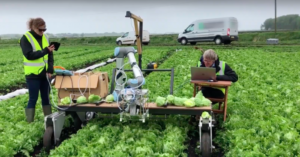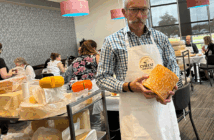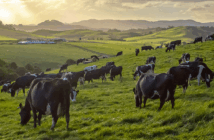A vegetable-picking robot created by researchers at the University of Cambridge, in the UK, has been put to the test in fields. It will harvest iceberg lettuce.
Agricultural harvesting has been developing for years in the field of farming, but never before has iceberg lettuce been harvested.
Many crops are relatively easy to harvest mechanically. For sturdier produce, such as potatoes or wheat, machines have been assisting with the harvesting task, but when it comes to the iceberg lettuce, with its soft leaves and low-lying profile, it has proven exceptionally difficult to create a harvesting machine to assist or take over from human laborers.
The findings of the research have been published in The Journal of Field Robotics.
The “Vegebot” and lettuce
Now, the “Vegebot,” as it has been aptly dubbed, can autonomously identify and harvest iceberg lettuce, thanks to the creation of the team at Cambridge University.
Working closely with “G’s Growers,” a local fruit and vegetable co-operative, the team has successfully carried out tests of the Vegebot in the field. Up until Monday, the Vegebot was only operating in the lab.
“Every field is different, every lettuce is different,” said co-author of the research, Simon Birrell of Cambridge University’s Engineering department. Birrell continued “But if we can make a robotic harvester work with iceberg lettuce, we could also make it work with many other crops.”
The Vegebot first uses its computer vision system to identify its target: the iceberg lettuce.
It can then determine whether or not the crop is ready to be harvested. If yes, the robot then uses its cutting system to chop off the lettuce from the rest of the plant and ensure it is ‘supermarket ready,’ aka pretty enough to be sold.

The prototype is still nowhere near as fast as humans when it comes to harvesting the lettuce, but the mere fact that a robot is able to identify which lettuces are ready to be harvested and can now pull them out of the ground properly is a huge step forward in the robotics harvesting field.
The team, led by Dr. Fumiya Iida, ensured to build a robot that could be adjusted to suit other crops.
Iida said, “We wanted to develop approaches that weren’t necessarily specific to iceberg lettuce so that they can be used for other types of above-ground crops.”
The future of the Vegebot
By creating and using robotic harvesters, issues such as manual labor shortages in agriculture, as well as reducing food wastage could be addressed.
Co-author of the study, Josie Hughes, said: “We’re collecting lots of data about lettuce, which could be used to improve efficiency, such as which fields have the highest yields.”
But first, the team are focusing on speeding the Vegebot’s functions so they can at least match human speeds.





























































































